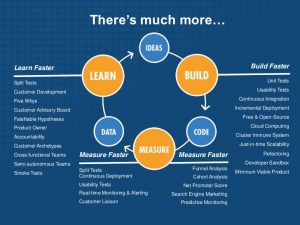While we nosedive into today’s recession, the customer does not really expect innovation to slow down, but companies to innovate smarter. Smarter? That could be problem-solving Design Thinking...
We still want our next gen smartphone with eccentric new features and our new electric car to drive 200 km further while being smarter and more autonomous. And did I mention it may get a little bit more expensive, but given our favorite company is so awesome, it somehow is less affected by recession so prices don’t go up that much.
If, as a company, we want to answer to this kind of challenge, we need to be fully aware of how to innovate smarter. In this blogpost we show you how, at The Value Hub, we believe this to be possible by putting the human and his fallacies into the middle of the innovative process.
5 common fallacies to tackle with problem-solving Design Thinking
Change for the better
We’ve heard it a hundred times before, yet people keep repeating ‘I’ve always done it this way’. That goes directly against the wisdom of Albert Einstein, who claimed that doing the same thing over and over again and expecting a different outcome is insanity. The world is changing at a high speed, so the outcome is likely to only change for the worse… If a company wants to remain relevant, it will need to reinvent itself over and over again. That implies we need to move away from habits towards a learning culture. Luckily, a lot is known about learning, we just need to apply it to an enterprise context.

The basics consist of a circle:
- an objective or area of interest
- an attempt to interact with this environment
- a form of feedback once the interaction has taken place.
It comes as no surprise that Eric Ries’ ‘Build measure learn’ lean startup theories prescribes this approach.
Trust the people
Once we adopt a learning culture, the question remains: ‘What are we building?' Too often the answer is: ‘we are building whatever the management or sales want’. Product managers and product owners often are puppets of senior management instead of self-sovereign enlightened despots. While this might sound historically questionable, it is certain that neither management nor sales have the ideal position to weigh customer needs, technical context and business reality at the same time. Hence a company needs to learn to trust the people assigned for the job. It might not be easy to confide so much responsibility in a single person, but it sure is the way forward and a learning experience for all parties …
Is the customer always king?
On the journey of learning how to innovate, an important stakeholder is the customer and its close nephew, the end-user. However, building whatever the customer wants is far from a guarantee for success, let alone innovation. In an age of user-centric design, we often overlook the basic fallacy that a customer is not fully aware of his own behavior and needs. Therefore, it is important to remain critical towards their input. Besides aligning on the customer’s needs, they often lack the necessary creativity to move towards true innovation. Henry Ford captures this idea with his known adage:
If I had asked my customers what they wanted they would have said a faster horse.
Henry Ford
In conclusion, it is important to include the end-user in the process to nourish the innovation team. Although, it cannot be the basis for true innovation.
Democracy? Decide!
Furthermore, it is important to note that co-creation among the innovation team members is not a guarantee for success. While a lot of people are needed to get an allround view of the playground on which we can innovate, true innovation requires guts. Guts to break with the existing. Product management is a complex interplay and requires a decision maker to guide the team. Starting from a clear vision and mission, and evolve towards a new journey. Democracy does not favor the bold, but protects the minorities. This means a strong hand and mind are key in the bold next step towards a sustainable future.
Less is more
Last but not least... Don't fall into the ‘next great feature fallacy’. Next great feature fallacy is what happens when you continue to develop great features for a new product, claiming this new feature will definitely make the product a game changer. It delays the time to market and increases the product development cost without testing the product itself.
Instead, dare to test fast and with incomplete solutions. The goal is to learn and bring value, no matter how small, to the end-user. The design of something new is not finished when you cannot add anything new, but when you can no longer retract anything from it without losing its value. While contrary to today’s beliefs, this truly is the key towards fast iteration cycles, which will guide the learning culture into new insights. Reduce risk and move fast. By doing so, you and your company will be able to step into this new way of bringing value.
In short
These 5 fallacies, linked to human behavior, reign today’s product management. It takes guts, a learning culture and a lot of alignment to build a new future. Luckily, there are strategies and methodologies that guide your team towards this new future. And luckily, we can help you doing that.
Read more about (problem-solving) Design Thinking? Or interested in other things we can do for you to make the change? Check out all of our insights!